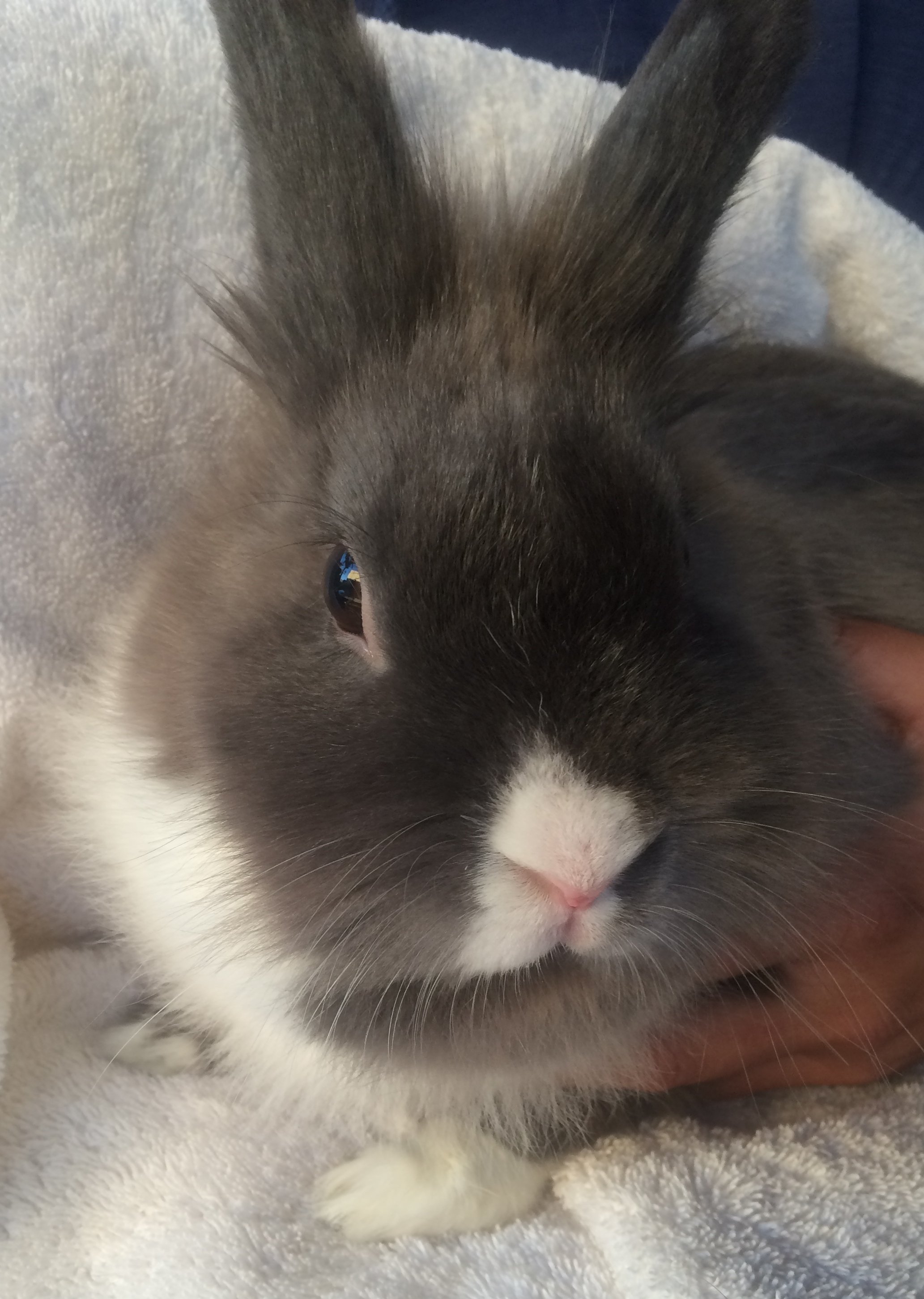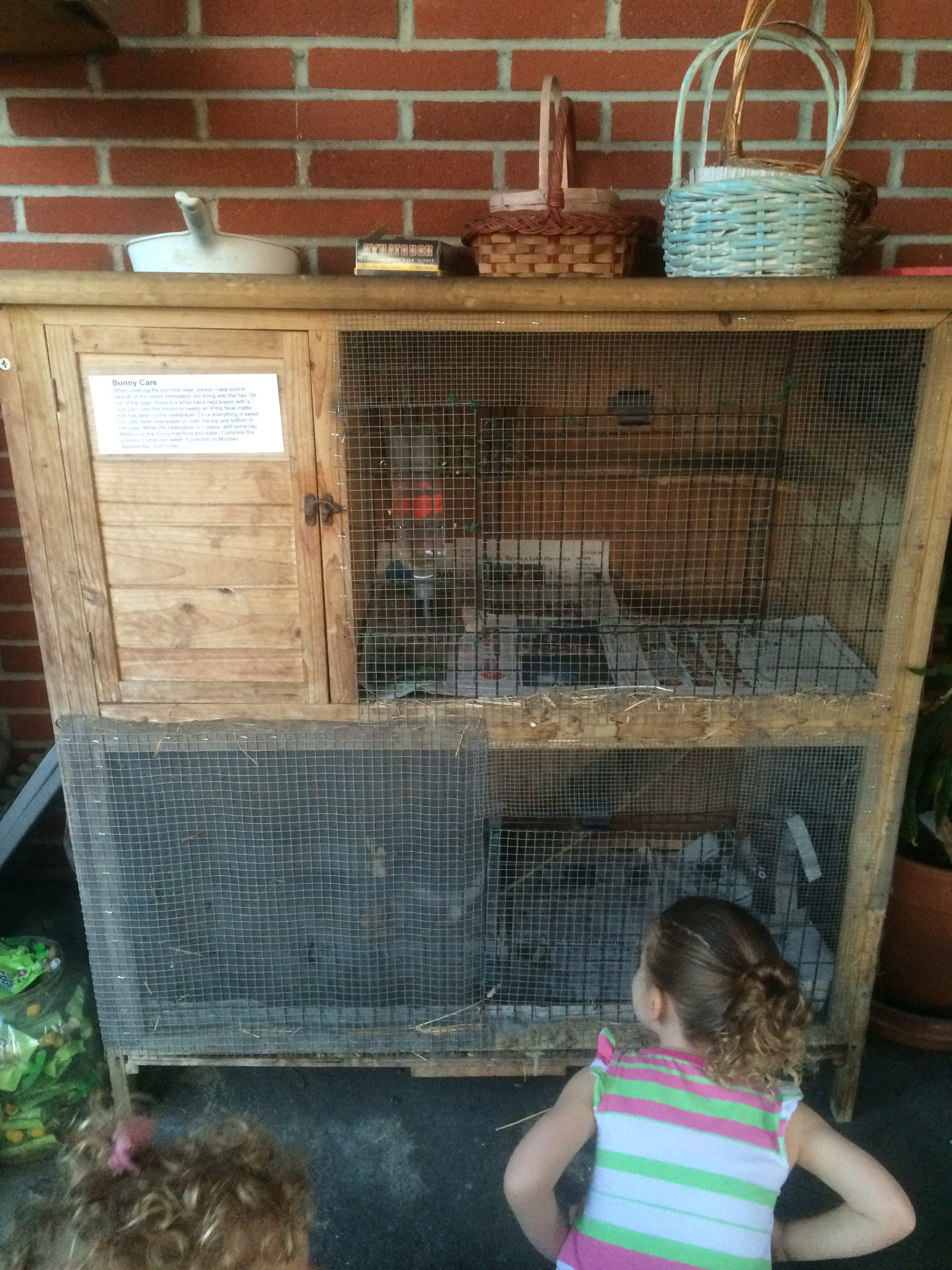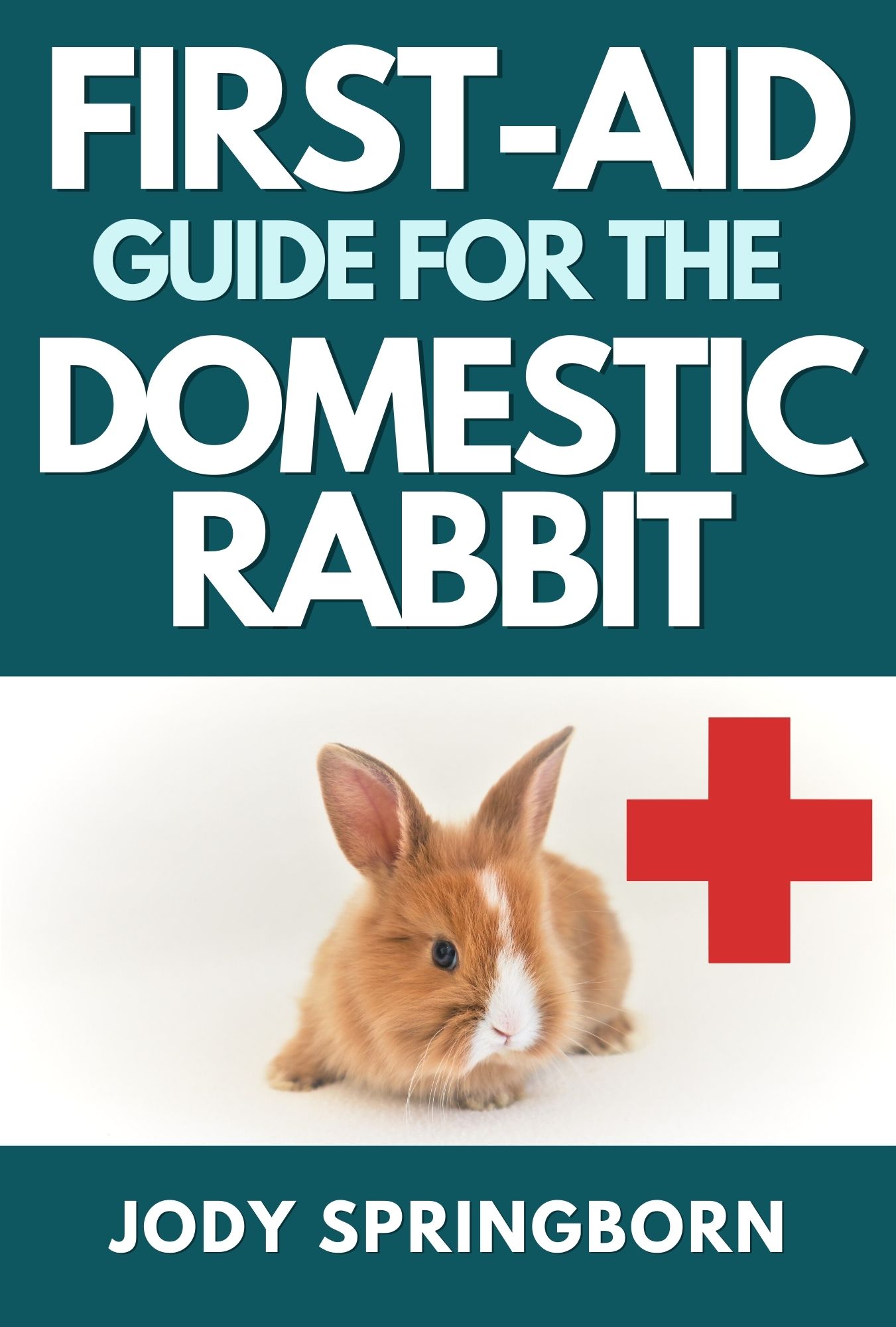- Home
- Rabbit Cages and other terrible ideas
- Classroom
The Classroom Rabbit
 Chicory during our first meeting.
Chicory during our first meeting.Is a Classroom Rabbit a Good Idea?
For many people, their first exposure to rabbits was the classroom rabbit. There may have been a small hutch, cage or crate with a bunny or two inside in the corner of the room. This may have been in biology class or maybe in an elementary or preschool. For me, my high school biology teacher had 3 hutches with rabbits. Most of those rabbits were incredibly shy and panicked whenever someone stepped near their hutch.
Many reputable rescues will not adopt out their rabbits to anyone who intends to house the bunnies in a classroom. Experience has proven this usually leads to a miserable existence and a drastically shortened lifespan for the rabbit. Why is this so? There are a few factors which do not make a classroom an ideal place.
- Rabbits are crepuscular, which means they are most active at dawn and dusk and their quiet time is from about late morning to the late afternoon. Therefore, they will be the most active and ready to socialize when no one is around, and during the time they are quiet and sleeping, there will be the most activity around them. This can cause a great deal of stress for the classroom rabbit.
- Rabbits are prey animals. To get rabbits comfortable around you requires time and patience. Students will not have time to sit and get to know the rabbits. After all, they are there to learn about the subject matter at hand. Since the classroom rabbits will not be well socialized, they will be shy. This will make it more challenging to get the bunny to relax, and most likely, very little - if any - time will be put in the effort to socialize them.
- Rabbits do not take change very well. If the teacher does not take full responsibility for the classroom rabbit, the bunny may end up at a different student’s house every weekend and holiday. Not only is this incredibly stressful, this is a drastic change of environment and diet. Where will the rabbit live - bathroom, bedroom, kitchen or garage? How many children are present? Are there any additional pets? Does the family know anything about rabbits? Drastic changes will increase the chances of gastrointestinal stasis and having any underlying health issues overlooked.
- Vet care. If the classroom rabbit becomes sick, no one wants to take him to the vet. While a parent or teacher may be willing to go buy a bag of hay or pellets from the pet store, finding and paying for vet care is a different matter. Suddenly this creature with no real family requires care that may cost hundreds to thousands of dollars. Unless a teacher, parent or principal steps in, medical problems are usually ignored.
- A rabbit’s needs are rarely met in a classroom. As previously mentioned in housing, cages and hutches are too small. Exercise time is rare, and even if a classroom rabbit is let out of the cage, being surrounded by 30 or more children may be a stressful and dangerous experience for a bunny. The focus in a classroom should be on the kids and what is being taught. This can mean that the bunny sits neglected and lonely at the back of the classroom.
- Rabbits can be territorial. This is especially true if they are not spayed or neutered. Children are often excited about classroom pets and seek to make friends. Sticking fingers, pencils, hay, etc. in a cage to poke the bunny, or reaching in to pull the bunny out of his quiet spot will stress a bunny and may cause him to bite hands.
- Proper diet is important. Quite often parents take on the responsibility of purchasing food. How often - or more importantly - how consistent the food quality is can be detrimental for a rabbit.
- Mishandling. Rabbits are fragile and it is important that they are handled securely to prevent broken backs and legs. Injury to the classroom rabbit will most likely end in euthanasia for that bunny.
 Chicory's hutch in the preschool where she lived for a few years. She was housed on an outdoor patio.
Chicory's hutch in the preschool where she lived for a few years. She was housed on an outdoor patio.Meet Chicory
I was first alerted to Chicory from one of the physical therapy vets BunnyLuv uses. One day our vet learned that there was a classroom rabbit at the preschool her children attended, and she knew the bunny was not in an ideal setting. She spoke to the teacher, who agreed to let BunnyLuv rescue the bunny.
I arrived at the school and saw the bunny housed in a small hutch on an outdoor patio. I could see a half-eaten corn on the cob and a water bottle hanging in the corner. The bunny was hiding in the box. I could get only a little bit of information on the bunny. The parents shared responsibility in purchasing food, and there was no consistency in what was purchased or how often. Normally whatever was on sale was bought. No one really knew how old the rabbit was, how long it had been at the preschool, if it was a he or she, or even if the bunny had a name. No one knew anything about this rabbit.
I took the bunny out and confirmed she was a girl. She was a pretty grey and white lionhead, but she was really scared. The nails were long, as they probably had never been cut. I trimmed them right there and put her in the carrier I had brought with me.
I set her up in the office at the shelter. She got a nice big litter box, hidey box and towel. It did not take her long to become comfortable enough to venture out of the hidey box and explore her surroundings. I decided to name her Chicory. It seemed to suit her.
Since very little was known about her, I made an appointment for her to have a check-up and get spayed. Fortunately, one of the vet techs at the clinic took an instant liking to her and asked to adopt her. It was an amazing stroke of luck. I was able to visit her one more time to have her adoption paperwork signed and say goodbye. It was a happy ending to a stressful beginning. Sadly, not every classroom bunny has a chance at a beautiful life.
Classroom Alternative
Having a rabbit visit a classroom or workshop is a better alternative, if you wish to expose kids to different animals. I have conducted several presentations in schools with kids of all ages and it has always been a great experience. Kids are usually very excited to meet the rabbit, and it's a great way for them to learn how to take care of them. This short time allows them to ask questions and become engaged in a discussion. It also emphasizes rabbits as a valuable family member, rather than a forgotten commodity at the back of the room.



